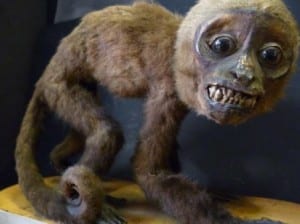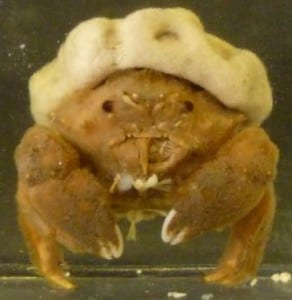Hidden gems of the Grant Museum: Introducing ‘Specimen of the week’!
By Emma-Louise Nicholls, on 17 October 2011
 This story is not about adoptions, but that is where it begins…
This story is not about adoptions, but that is where it begins…
Being majorly involved in our stupendously popular adoption scheme, I get to speak to a lot of our new members and potentials about their specimen choice. A phrase I hear a lot from people who have just arrived is “everything has already gone!” Oh so how untrue my friends. You see, the asset which endows the Grant Museum with its astounding atmospheric ambiance, is the Victorian ‘squeeze as many specimens in as possible’ display method. As a result, although we are approximately the size of 1/6th of a football pitch (apparently?) compared to the Natural History Museum in South Kensington which probably covers around 9000 football pitches, we have the same number of specimens on display to the public. Yes! I’m not making that up! (Except the 9000 football pitches… possibly…) So, is everything already adopted? Of COURSE not! Yes most of the very large articulated skeletons have gone but we have around 6,800 specimens on display and currently 201 adopters caring for a total of 213 adoptids. That leaves 6,587 orphans, and that is only counting the ones on display. There are a further 61,200 orphans back stage that us Grant Museum staff have to cater to the emotions for. What people are sadly missing in their excitement are the hidden gems of the Grant Museum. Of which, there are literally thousands. You just have to look more closely…
It is as a result of all these shenanigans, that I have decided to write a short weekly blog naming a ‘Specimen of the week’!! HOORAH!! It will feature any specimen at all and is not related to the adoption scheme so will cover orphans and adopted specimens alike plus the odd specimen from our stores which would otherwise be unseen by a wider audience than specialists. And us. It’s purpose is to tell the story, in the format of five short but world rocking facts, of a funky specimen deemed fantastic enough to warrant the attention, (so clearly I have thousands of weeks worth of material) and put it online to cheer up your Monday mornings. Yes dear readers- it is *all* for you.
This week’s specimen? Remember Mario Brothers? You know the 1 up mushroom that would seemingly come flying up out of your head whenever you collected some vital item of point gaining importance? Well, we have one! An actual specimen! His name? The SPONGE CRAB!! Here, on the right, is an image of the little fellow –>
How cute is HE!?? So here goes, the first set of five funky specimen facts:
1) Juvenile sponge crabs use their claws to cut pieces of sponge to size, and then carry them around on their backs for camouflage.
2) The crab flips its rear leg pair up over its body to hold the sponge, which is still living, in place.
3) A desperate sponge crab without a suitable sponge to cut, once carried around an old flip-flop.
4) Contrary to popular belief, it was in fact a cartoon mushroom that appeared in the popular game Mario Brothers, and not a sponge crab.
5) There are five extant species of sponge crab plus two further species known only from the fossil record.
So there you have it. He’d love to meet you if you pop in to the museum. He’s a playful thing with the cutest expression, and is still carrying (as you can see over on the left) his sponge hat camouflage. See if you can find him?
I’d be delighted to take requests for next week’s specimen of the week, feel free to write your suggestion in the comments. Or if there is a cool animal you want to know more about, I’ll see if we have one!
11 Responses to “Hidden gems of the Grant Museum: Introducing ‘Specimen of the week’!”
- 1
-
2
Daniel Morse wrote on 18 October 2011:
I think “Specimen of the Week” is a very good idea.
Do you have any Channichthyidae specimens?
-
5
Daniel Morse wrote on 24 October 2011:
*groan* ;o) (But ice fish are amazing creatures aren’t they!)
Cool – I’d downloaded your entomology species list but I didn’t know about that online database. D’oh!
I’d thought of suggesting one of the Moray eel species, because if there’s one thing more awesome – in the literal meaning of the word – than pharyngeal teeth it’s pharyngeal jaws; but your catalogue only lists one specimen, in the leptocephalic stage, and I don’t know if they’ve developed that structure at that point. (Have they?) But then I thought that the eel lifecycle, from leptocephalus, through glass eel to juvenile and adult is even more awesome than pharyngeal jaws, so it would still be well worth highlighting. Eels probably aren’t seen as very “glam” and are struggling a fair bit, what with the human food and clothing industries, dams and parasitic nematodes, and in general people probably don’t know much about them.
But then there are so many animals about which people must be crying out to know more; it’s so hard to choose!
-
6
Alex Willatt wrote on 24 October 2011:
How do we adpot a specimen? I can’t find a link on the website. Is this one still orphaned?
- 8
 Close
Close




Scary monkey will eat your soul…